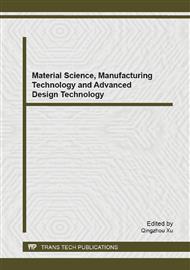p.432
p.437
p.442
p.446
p.450
p.454
p.460
p.465
p.469
Study on Ship Hull Deformation by Integrated Model of Hull with Shaft
Abstract:
Hull deformation directly influences the working condition of propulsion shaft, so that the reasonable and accurate calculation of deformation is the basic content of research on ship propulsion system. This paper, basing on a large container ship, built up an integrated finite element model of the hull with the propulsion shaft. By employing inertial relief method, the hull deformation at place of shaft supports is calculated under different loading conditions. The results are compared with those from a hull FEM model without shaft. Some valuable conclusions are made from the results analysis.
Info:
Periodical:
Pages:
450-453
Citation:
Online since:
March 2014
Authors:
Keywords:
Price:
Сopyright:
© 2014 Trans Tech Publications Ltd. All Rights Reserved
Share:
Citation:


